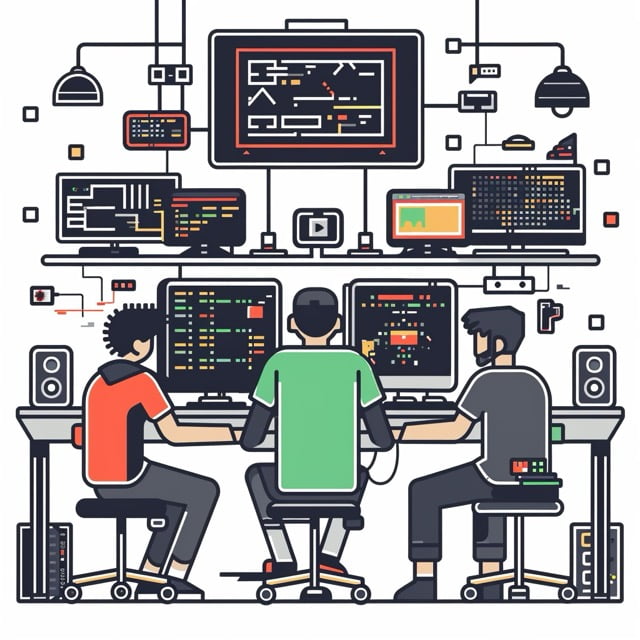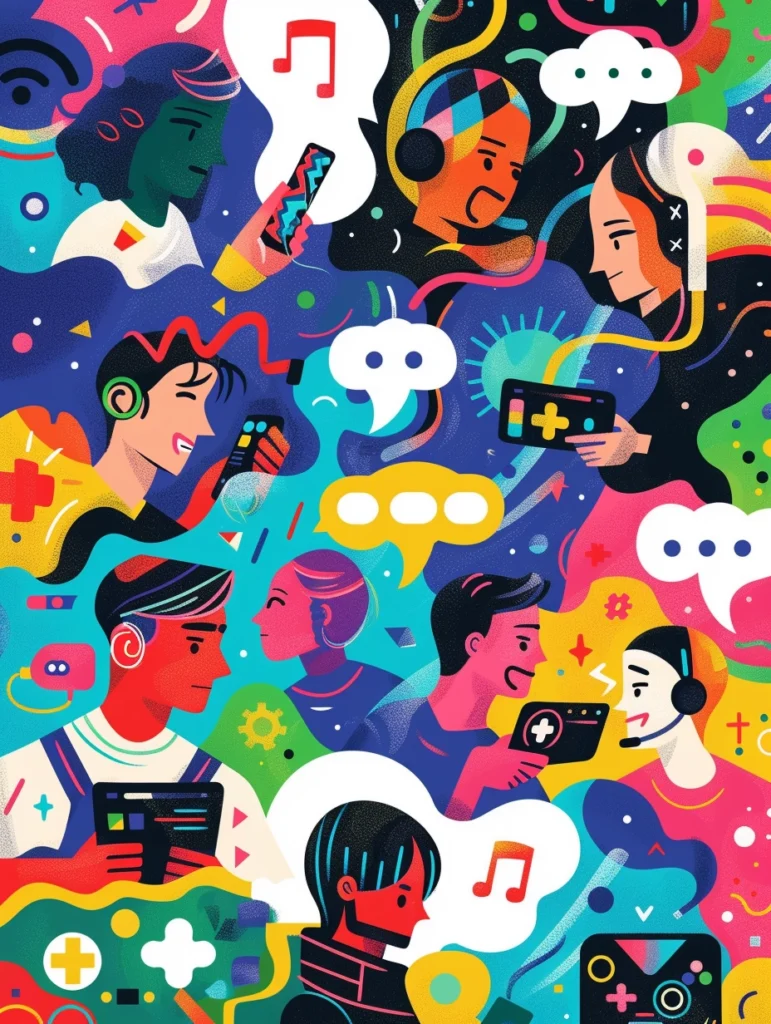Gaming is a global 282 billion-dollar industry, making localization an inherent part of game development. If you’re an independent developer though, you may not have the luxury resources of a large studio with a dedicated game localization team. Yet localizing is still crucial for reaching a wider audience and ensuring players from different regions can fully enjoy the experience. The good news is that you can do a lot on a small budget. Here are the top five best practices you should consider to effectively and efficiently localize your game for international users.
1. Plan for Localization from the Get-Go
One of the most important best practices for game localization is to consider translation from the very beginning of your game development process so that you can streamline the localization project and workflow as a whole.
By planning for localized versions of the game early on, you’ll save time and resources in the long run. Try to involve at least one localization expert in the development process to ensure your game is designed with localization in mind.
Tips for Planning Game Localization
- Map out a clear localization strategy that outlines your target audience, languages, and cultural considerations.
- Start putting together a localization kit that includes all the necessary resources for your translators, such as game scripts, character profiles, and your style guide.
- Design your game with localization in mind. You’ll want the user interface to be flexible enough to accommodate text expansion, and you’ll also want to avoid hard-coded text in your source code.
- Factor in the impact of localization efforts on your game’s development timeline and budget, and timebox accordingly.
- Research the cultural preferences and expectations of your target markets to ensure your game content resonates with local audiences.
If your head is spinning at this stage already because you have no style guide, no roadmap, and haven’t researched any target locales, or if you just want to get everything off your plate so you can focus on the actual build, get in touch with Modilingua for a custom strategy and localization plan tailored to your game.
2. Prepare Localizable Game Assets for Your Target Market
To streamline the localization process, you’ll want to prepare your game assets in a localization-friendly manner. Localizable game assets include text, audio, and any graphics that need to be translated or adapted for the different regions you plan on targeting.
Examples of Localizable Game Assets
- In-game text, such as dialogues, menus, and tutorials
- Voice-over scripts and subtitles
- Graphics and images containing text
- UI elements like buttons and icons in different languages
- Game manuals, help docs, FAQs, marketing materials
Best practices for preparing your game assets for localization include:
- Separating localizable assets from code and using localization-friendly file formats, such as XML or JSON.
- Providing context and comments for translators so they can deliver accurate translations.
- Using a consistent naming convention for localizable files and assets.
- Implementing a version control system to manage localization updates and changes in your localization project.

3. Work with a Reputable Video Game Localization Partner
Partnering with skilled game translators and a localization manager is the smartest move for ensuring the quality and accuracy of your localized game. Experienced game translators have a deep understanding of the gaming industry and can help you navigate cultural nuances, while a localization PM will keep everybody on the same page, your roadmap on track, and can even help you navigate compliancy.

Ensuring High-Quality Game Translations
- Provide context and reference materials to translators, such as character backstories, game lore, and visual references.
- Encourage open communication during the game localization process to clarify any questions or issues that may arise.
- Implement a review and quality assurance process to catch any errors or inconsistencies in the localized content.
- Work with native speakers and local market experts to ensure that translations are culturally appropriate. Even if you’re on a shoestring budget and outsourcing everything to Fiverr, it’s also important if you want to avoid bad translation mistakes.
- Make use of translation memory tools and glossaries to maintain consistency across all localized content.
4. Conduct Thorough Localization Testing
Testing your localized game in different languages on different devices is essential if you want it to meet the expectations of players in different regions. Localization testing should cover linguistic, functional, and cultural aspects of your game.
A Minimum Viable Localization Testing Checklist
- Test for linguistic accuracy and consistency across all localized content.
- Verify proper display of localized text and graphics, ensuring that they fit within the designated spaces and do not overlap.
- Check for cultural references and compliance, such as age ratings and content restrictions in different locales.
- Ensure functionality of localized versions, testing for any bugs and compatibility issues.
- Validate that all localized assets, such as voice-overs and subtitles, are properly integrated and synchronized.
- Do user testing with native speakers to gather feedback and identify areas for improvement.
Involving native speakers in the testing process can provide incredibly valuable insights and help you identify any cultural or linguistic issues that may have been overlooked.
5. Provide Your Game Market with Ongoing Support and Updates to Localized Versions
Launching your localized game is a great achievement, but it’s not the end of the localization process. You have to provide ongoing support and updates for your localized versions – it’s vital for maintaining player satisfaction and addressing any issues that may arise in production.
Maintaining Localization Quality Post-Launch
- Establish a process for updating localized content, such as adding new features or fixing bugs.
- Regularly gather and analyze player feedback from different regions to identify areas for improvement.
- Ask your localization partner about a retainer for ongoing support and to ensure that any updates or patches are properly localized on a continuous basis.
- Monitor the performance of your localized game in each local and make data-driven decisions for future updates and localization efforts.
- Use AI to provide localized customer support and address players’ inquiries and issues in their native language.
Best Practice Summary & Further Resources
| Localization Best Practice | Key Benefits of Localization Services |
|---|---|
| Early planning | Saves time and resources, ensures localization-friendly design |
| Preparing localizable assets | Streamlines localization process, reduces errors and inconsistencies |
| Working with professionals | Ensures high-quality translations, navigates cultural nuances, and enhances the effectiveness of your game localization project. |
| Thorough testing | Identifies linguistic, functional, and cultural issues in your localized game versions to ensure player satisfaction. |
| Ongoing support | Maintains localization quality, addresses player feedback and issues |
By following these best practices, you can ensure that your video game is ready for a global audience. Investing in quality translation can lead to increased global reach, player satisfaction, and ultimately, the success of your game with international users.
Localizing your game can open up exciting new markets and allow players all over the world to really immerse themselves in your creative vision. While the process involves careful planning and a strong degree of cultural awareness, the rewards of a successfully localized game are totally worth the effort.
For more information on best practices for game localization and industry insights, you might find these additional resources helpful:
- The Game Production Toolbox by Heather Maxwell Chandler (Amazon link)
- Interview with the above author, who was also a Sr. Producer on Fortnite
- Game Developer News
- The International Game Developers Association (IGDA) Localization Special Interest Group
Finally, by staying connected with the community around the video game industry, you can continue to refine your strategies and processes to deliver localized experiences that delight and engage your players across cultures and languages.
